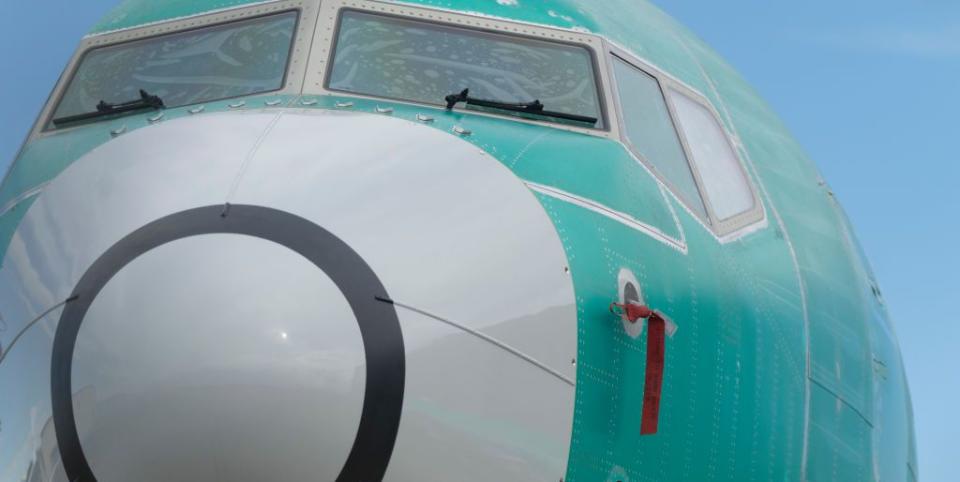FAA 'Tentatively' Approves Software Fix to Get the 737 Max 8 Flying Again

The worldwide grounding of Boeing's 737 Max 8 and 9 airliners has upended the aviation business, with American Airlines canceling up to 90 flights a day because of a dwindling fleet. But the impasse might soon be reaching an end. The Federal Aviation Administration is reportedly on the cusp of approving a safety update that could make the seemingly disaster-prone aircraft viable again, The Wall Street Journal reported Sunday.
The embattled manufacturer promised a software update in the immediate aftermath of the Ethiopian Airlines crash earlier this month, meant to rectify an issue with the aircraft's Maneuvering Characteristics Augmentation System (MCAS), which tilts the plane's nose downward to avert stalling. Now, according to the Journal, officials at the FAA have "tentatively" approved Boeing's software update, which will make the automatic anti-stall system easier to for pilots to control.
Per The New York Times, pilots from United Airlines, Southwest Airlines and American Airlines were briefed on the update in a meeting with Boeing over the weekend. The MCAS system has been a central focus of for investigators, with authorities citing "clear similarities" between last October's Lion Air crash and the Ethiopian Airlines disaster earlier this month, both of which occurred shortly after erratic takeoffs.
The new system is designed to push the plane's nose down for no longer than 10 seconds in the event of a detected stall. The revamped planes will be outfitted with two sensors on the plane's nose, rather than one, to counteract the possibility of faulty information triggering the MCAS system. The FAA is primed to receive the software update "early in the week," but will wait to lift the ban on the 737 Max pending the results of the Ethiopia Airlines investigation.
Here's how the update works, according to the Journal:
The modifications, officials said, create a gentler stall-prevention feature, redesigned so it won’t overpower other cockpit commands or misfire based on faulty readings from a single sensor. It is devised to automatically push the nose down only once-for no longer than 10 seconds-if the aircraft is in danger of stalling and losing lift.
Following the Ethiopian Airlines crash earlier this month that killed 157 people, Boeing's highest-selling plane was grounded across the world. The incident was the second major crash involving the aircraft in five months. The ill-fated journey of Lion Air Flight 610 also ended in disaster, killing all 189 people onboard last October.
With the Lion Air tragedy, a faulty sensor on the plane's fuselage fed inaccurate data into the cockpit, signaling the plane's nose was too high and triggering the MCAS system. The aircraft began a nosedive which pilots failed to counteract, and plunged into the Java Sea. While the ultimate cause of the Ethiopian Airlines crash is still unknown, both planes met their disastrous fates minutes after takeoff.
Boeing called Saturday's meeting a "productive session," with pilots successfully counteracting the MCAS system in simulated tests, and landing the planes unscathed. The manufacturer has plans to invite upwards of 200 pilots, regulators, and technicians to an informational session on the new system at its Washington state production facility.
Source: The New York Times, CNN, Gizmodo
('You Might Also Like',)
